The Sacred Food Offered to the Deities at Ise Jingu
Ise-Shima: The Homeland of the Japanese Soul #03
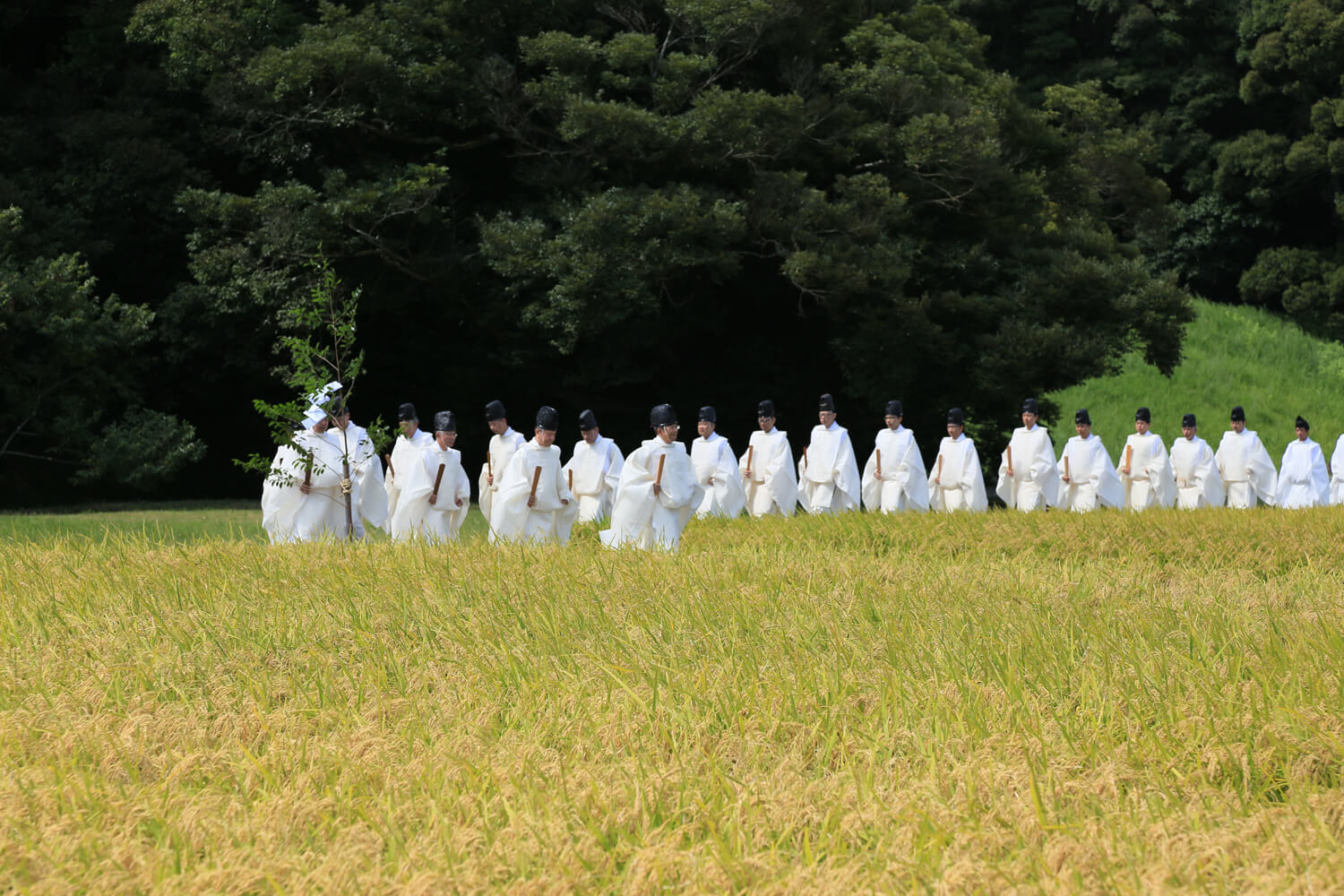
Shinto priests proceeding towards the Nuibosai (Rice Harvesting Ceremony) that is held in early September. The purpose of the ceremony is to harvest the first rice to be presented at various Imperial-related ceremonies. Courtesy of Jingushicho
‘There is somewhere in Japan where food has continually been provided to the deities, without interruption, for some 1,500 years’—That statement may especially be surprising for foreign visitors to Japan who have little familiarity with Japanese culture.
The sacred food provided to the deities is called shinsen in Japanese. At Ise Jingu, the food has continued to be been offered to the deities twice daily—once in the morning and once in the evening—for the remarkably long span of some 1,500 years, without even a single day taken off.
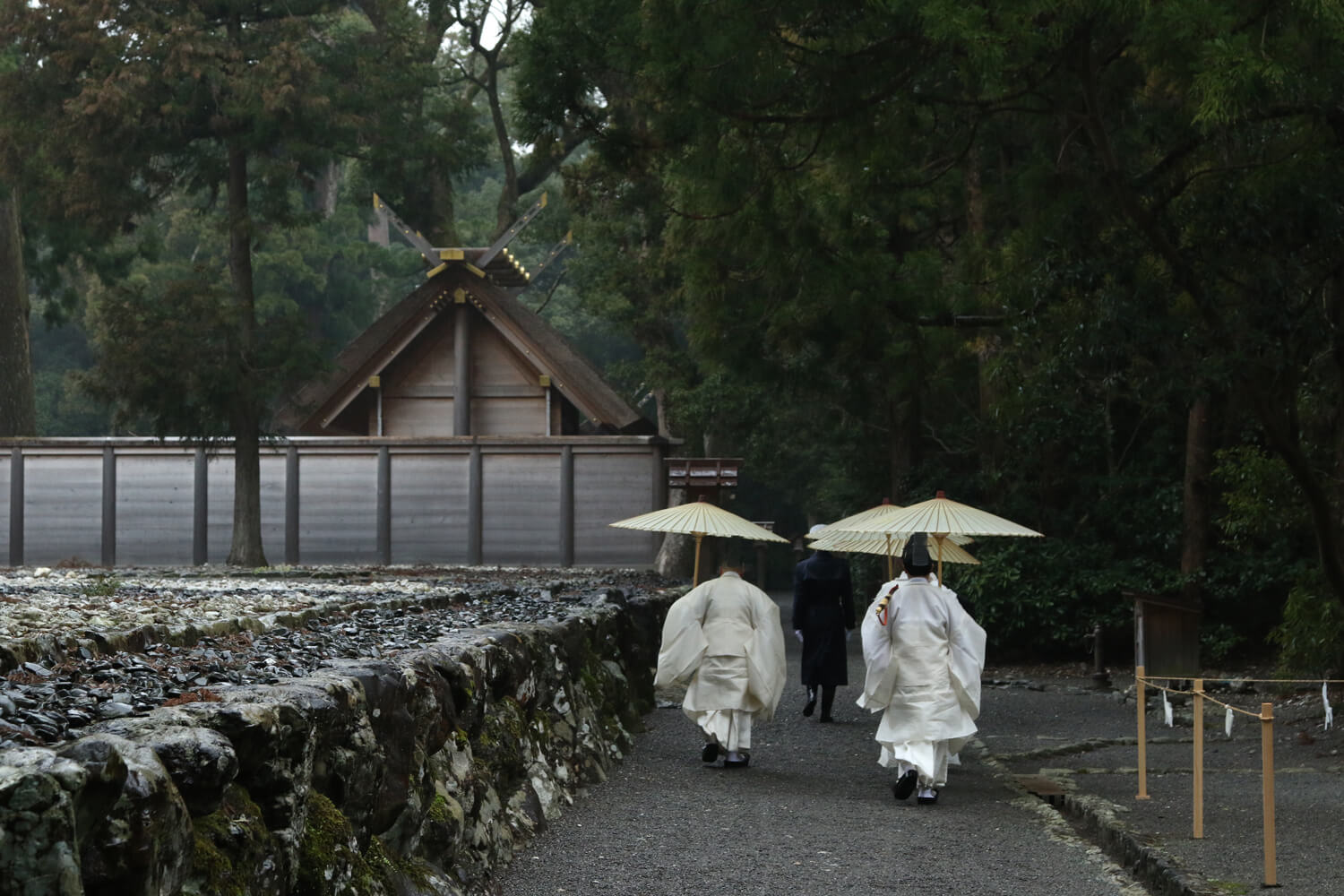
Shinto priests making their way toward the Mikeden building within the Toyoukedaijingu to carry out the Higotoasayuomikesai ceremony to give sacred shinsen food to Amaterasu Oomikami. Courtesy of Jingushicho
Mie Prefecture lies virtually in the centre of Japan’s Pacific coast. Ise-Shima National Park encompasses part of Shima Peninsula, which is situated in the central eastern portion of the prefecture. The park’s beauty stems from the interwoven mixture of human cultivation and Mother Nature, both on land and at sea. The entire area is called Ise-Shima, with Ise Jingu occupying the central role.
Sacred shinsen food has continued to be offered at Ise Jingu for many centuries. It is intriguing to contemplate why the Japanese give the gods food in that way. What sort of spirituality do they have underlying the continuous, uninterrupted provision of food over such a long time?
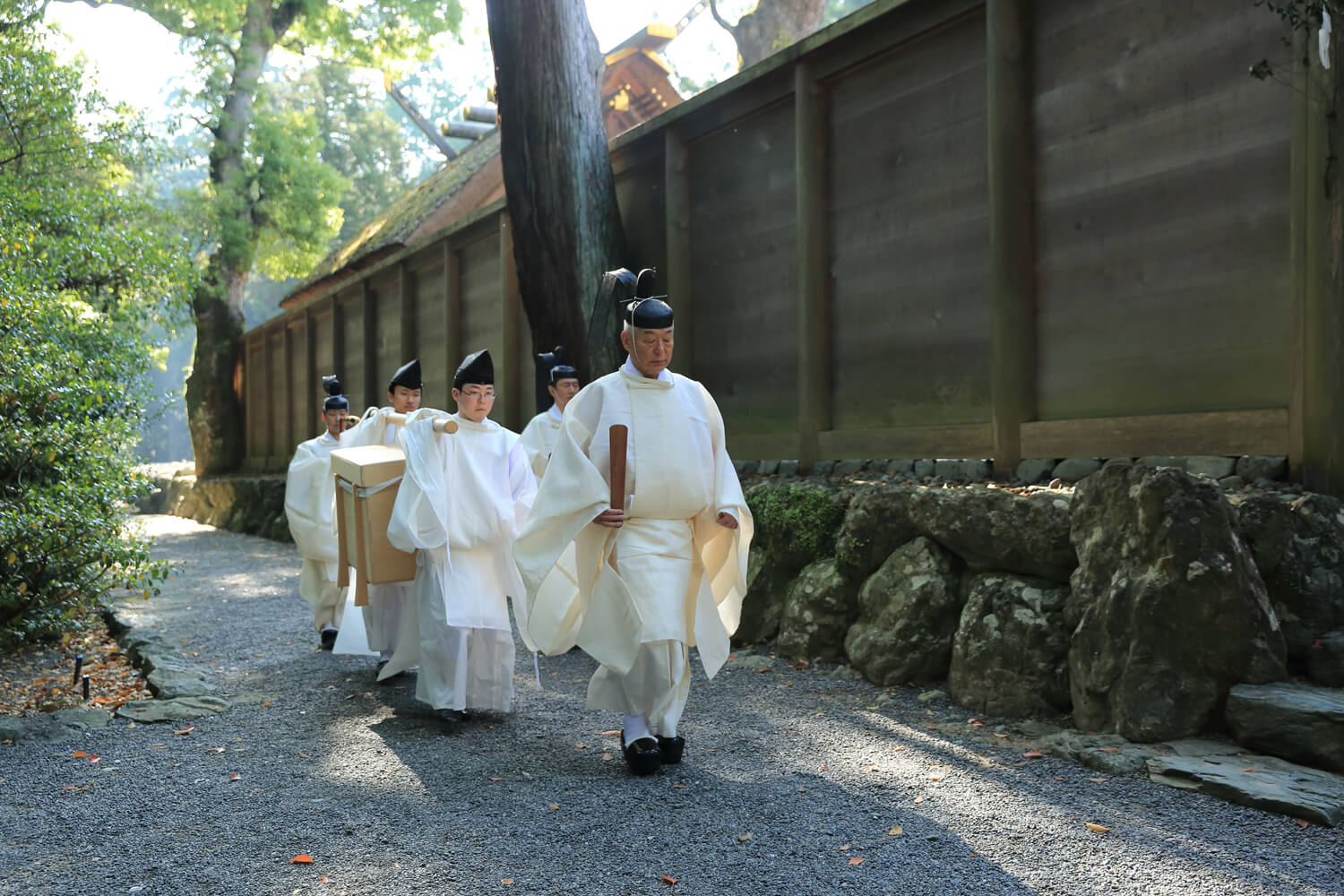
Shinto priests making their way to the Mikeden building. In addition to Amaterasu Oomikami, who resides inside the main building, the sacred shinsen food is also provided to the deities enshrined in both Naiku and Geku. A negi senior priest performs a Shinto prayer before the Mikeden, beseeching the deities to bestow security onto the Imperial Family and happiness onto the Japanese people. Their prayers are given daily. Courtesy of Jingushicho
The key to answering the question of why the Japanese give the deities food lies in the special relationship among the deities, humans and food that has been passed down, without fail, over so many generations.
From ancient times, the Japanese have worshipped the deities, wished for calamities not to happen, prayed for bountiful harvests and catches of fish, and conducted festivals, all because they view nature with a sense of awe. Generally, festivals begin with the participants purifying their bodies, after which they welcome the deities in and offer them sacred shinsen food. Next, the chief priest of a jinja recites a prayer, after which a togyo procession starts with the participants carrying a mikoshi portable jinja on their shoulders through the streets. Finally, a naorai feast is shared between the deities and humans. The contents of the sacred shinsen offered at that time basically come from those locations from which the people have benefited the most, be it from the ocean, the rivers, the mountains or the plains. For that reason, the naorai feast has the following implication: ‘By sharing the food that the deities have eaten, one feels a sense of unity with them, and receives the benefit of their spiritual power’.
The custom of receiving the benefit of divine spiritual power through food is not necessarily limited to the naorai feasts of Shintoism. For example, in the First Communion ceremony of the Catholic Church, a believer who has previously been baptised receives the Eucharist for the first time, in the form of bread and wine, to achieve a sense of unity or ‘communion’ with God. There is, however, a decisive difference between the two practices. Whereas the latter Catholic practice signifies a completion of the relationship between God and humans, the former Shinto practice connotes a clearer consciousness of the ‘deities’ actually being nature itself.
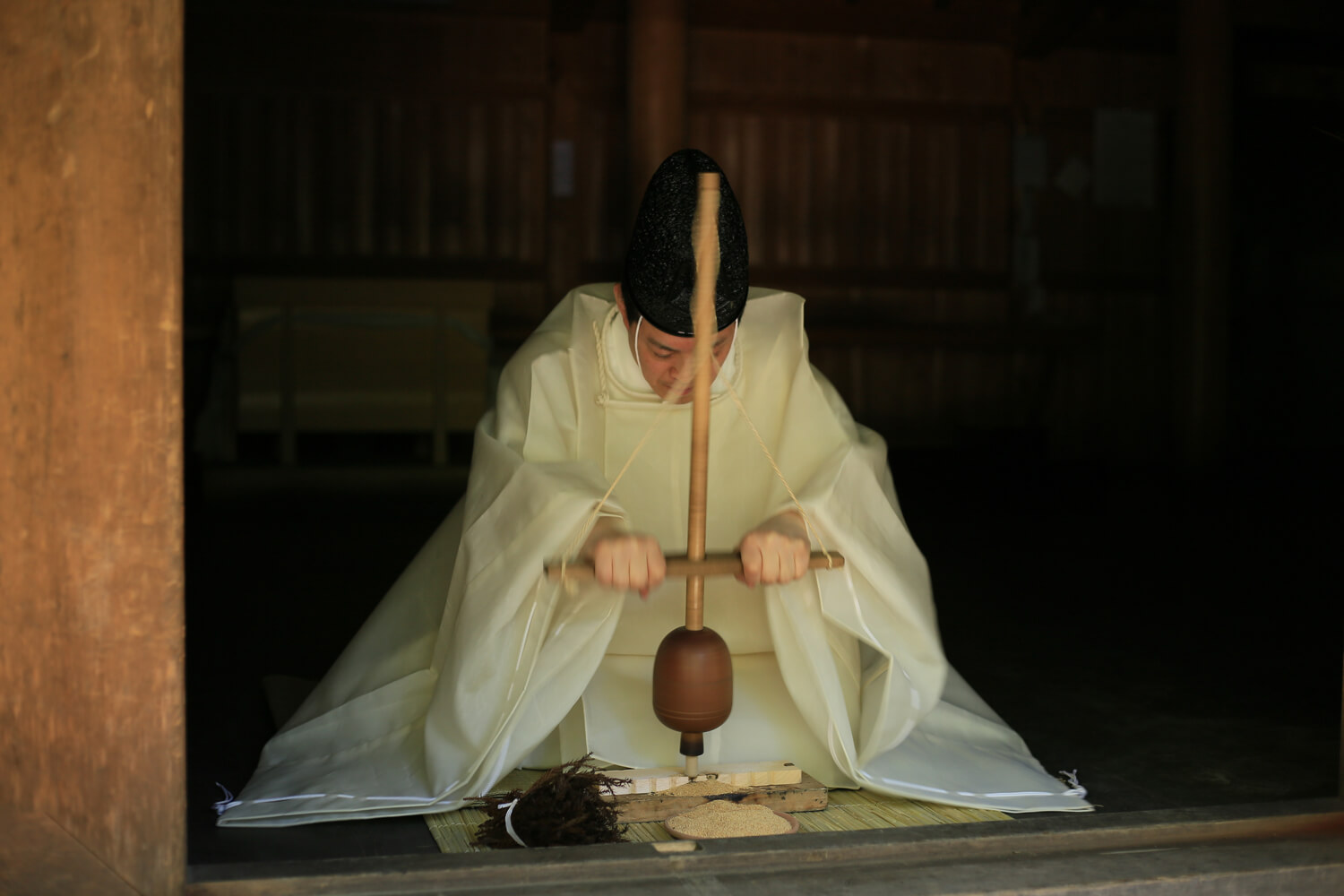
The building where the sacred shinsen food is prepared is called the Imibiyaden. The shinsen offered to the deities is made with a special fire known as the imibi, meaning ‘pure fire’. The imibi must be lit by the Shinto priests using hikirigu implements just as in ancient times. Courtesy of Jingushicho
Such a clear consciousness of the deities actually represented by nature itself gives us a clue to answering the question of what sort of spirituality the Japanese must have had that underlies the continuous, uninterrupted provision of such food over such a long time.
The ceremony at Ise Jingu to offer sacred shinsen food to the deities, formally called the Higotoasayuomikesai, started about five centuries after Amaterasu Oomikami, the main deity, enshrined at Ise Jingu. With Amaterasu Oomikami established as its miketsukami (deity of foodstuffs), Ise Jingu then welcomed in Toyouke Oomikami, the tutelary deity of all industry, including the food, clothing and shelter that are indispensable to human life. The ceremony takes place at the Mikeden (sacred food building) of the Toyoukedaijingu (Geku), where Toyouke Oomikami is enshrined, with the sacred shinsen food offered every morning and evening. It has been continued every single day, without interruption, for some 1,500 years already, ever since the deity was first enshrined there.
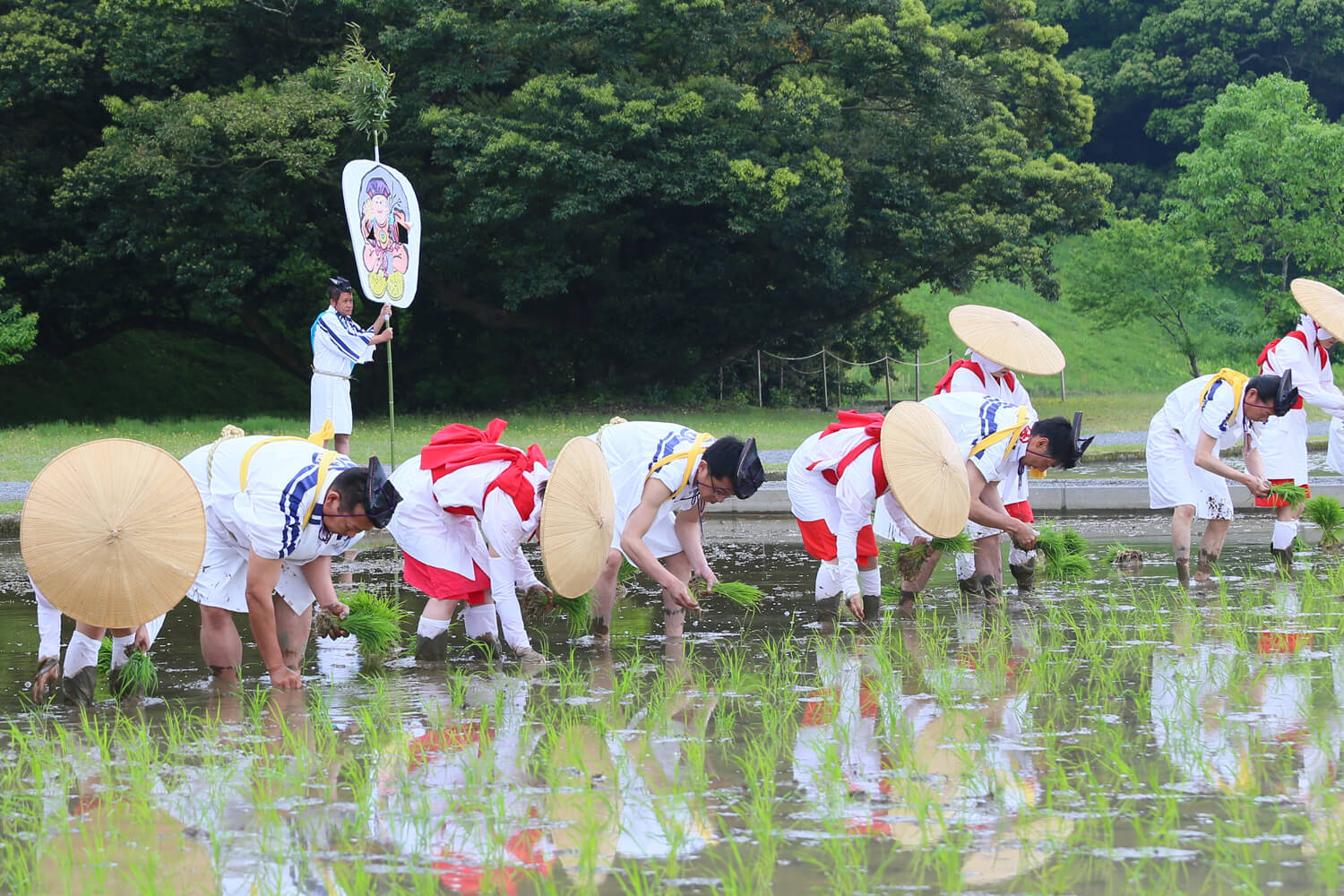
Rice seedlings being planted in the Shindenotauehajime (sacred field first planting) ceremony, which takes place in the first part of May. Courtesy of Jingushicho

Samples of the vegetables and fruits offered in the Higotoasayuomikesai to offer sacred shinsen food to the deities. Courtesy of Jingushicho
The sacred shinsen food offered to the deities in the Higotoasayuomikesai includes the following: three servings of rice, dried bonito, fish, seaweed, vegetables, fruit, salt, water, and three rounds of sake. Surprisingly, most of those items are supplied from ingredients procured locally within or near Ise Jingu itself. For instance, the rice is goryomai (Imperial rice) harvested from the sacred fields of Ise Jingu, while the salt is produced in the exclusive Mishiohama saltpan, and the sea bream is prepared using traditional methods at a kitchen on Shinojima Island in Aichi Prefecture. At a fundamental level, the spirit of awe and gratitude toward nature that the Japanese have inherited, along with their respect toward the deities, underlie both the attitude of treating the sacred shinsen food itself as divine and the thoroughgoing pursuit of its purity and cleanliness.
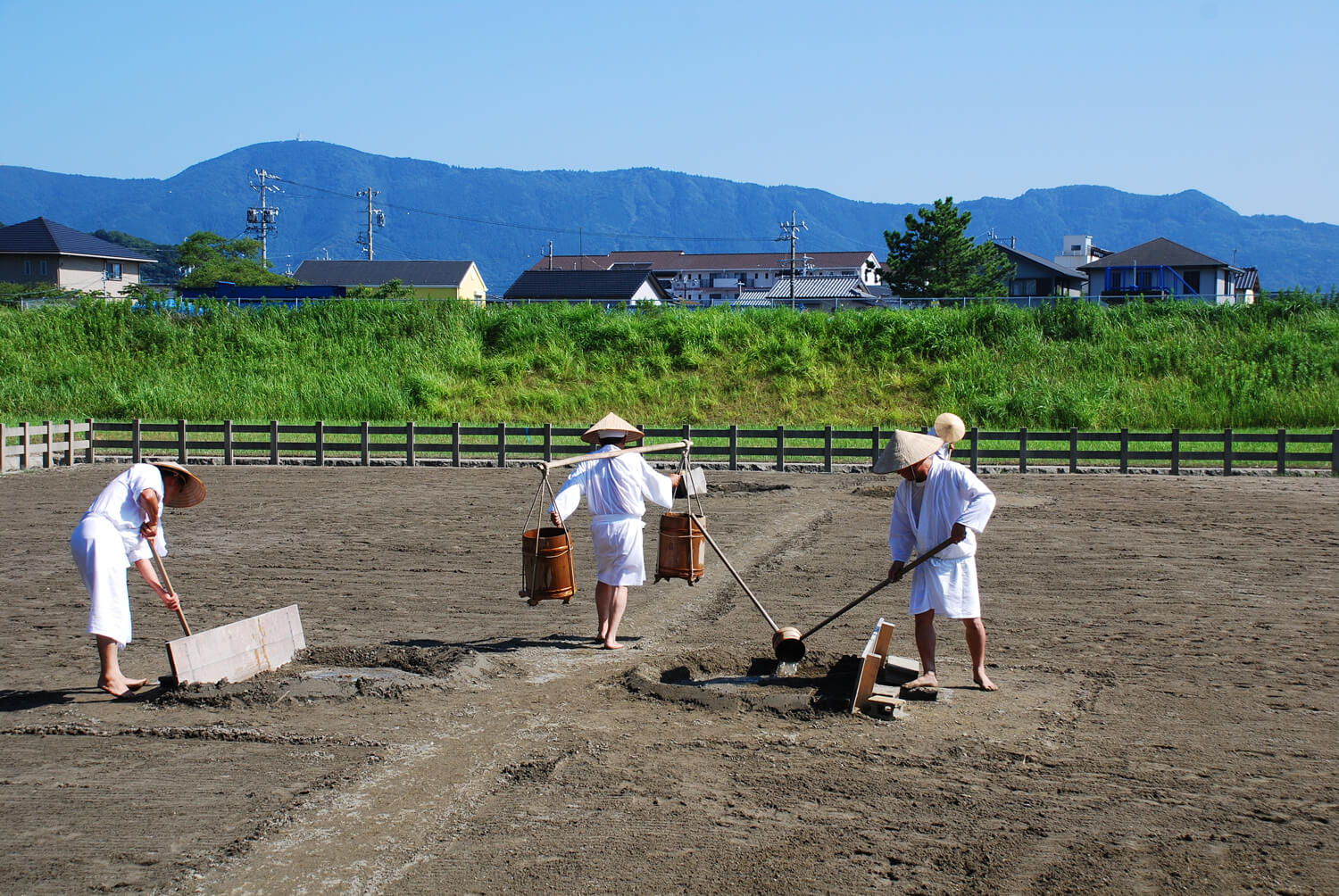
Not only is the mishio (Imperial salt) used as an offering to the deities, but it is also used as purifying salt sprinkled before ceremonies and festivals, making it indispensable. The salt is still produced using ancient methods. Courtesy of Jingushicho
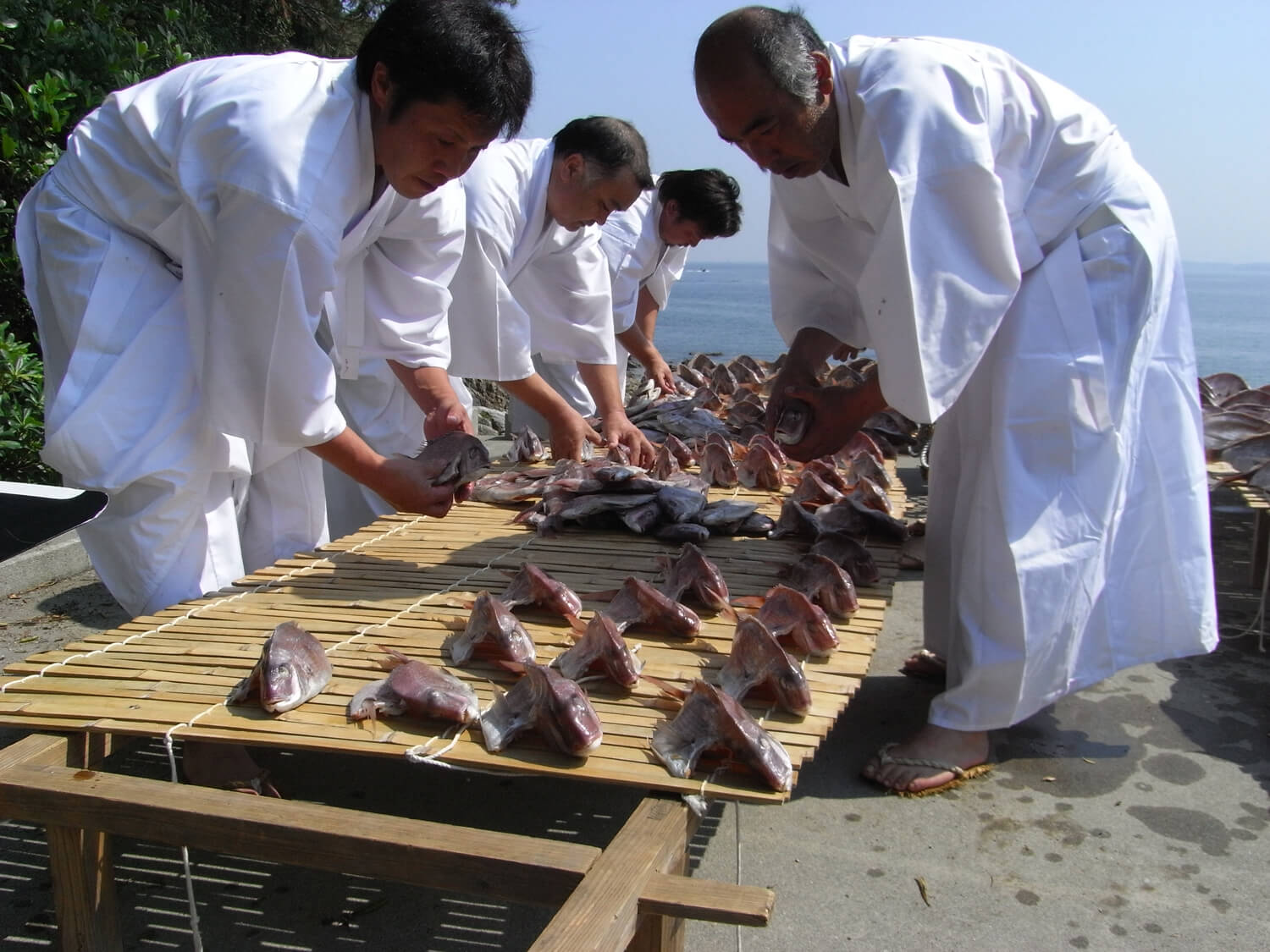
Amongst the various types of sacred shinsen food, special status is accorded among seafood to sea bream, known as tai in Japanese. Hidai, or dried sea bream, is prepared by first removing the fish’s inner organs then applying salt to it, after which it is sun-dried for two days. Courtesy of Jingushicho
Many people who visit Japan are impressed by Japanese food, a fact that is suggested by the sacred shinsen food passed down at Ise Jingu, and the tradition of the ceremony of its offering. Through the practice of eating meals, one gives thanks to nature and expresses a feeling of awe and respect to the deities—that is one form of Japanese culture and spirituality.
Unfortunately, ordinary people are not allowed to directly experience the offering of sacred shinsen food to the deities at Ise Jingu; only special Shinto priests are qualified to do that. However, by appreciating that culture and spirituality while confronting food, tourists to Japan ought to be able to make their trip even more meaningful and special. The sacred practice of what can be described as the ‘archetype of Japanese food’ thus continues in an unbroken tradition down to this day at Ise-Shima.
Ise-Shima: The Homeland of the Japanese Soul —
#01: Sensing the Profound Origins of the Japanese People: A Journey to Ise Jingu >
#02: The Awe-inspiring Nature Protects Ise Jingu >
#03: The Sacred Food Offered to the Deities at Ise Jingu
TRENDING
-
The Tattoos that Marked the Criminals of the Edo Period
Traditional tattoos were strong signifiers; murderers had head tattoos, while theft might result in an arm tattoo.

-
Paris, Tokyo: Robert Compagnon
With his co-chef and talented wife, Jessica Yang, Robert Compagnon opened one of the top new restaurants in Paris: Le Rigmarole.
 3:31
3:31 -
Chiharu Shiota, Red Threads of the Soul
Last year, more than 660,000 people visited the retrospective 'Chiharu Shiota: The Soul Trembles' exhibit at the Mori Art Museum.

-
‘Before Doubting Others, Doubt Yourself. Who Can Truly Say a Dish Isn’t What It Used to Be?’
In ‘A Non-Conformist’s Guide to Surviving Society’, author Satoshi Ogawa shares his strategies for navigating everyday life.

-
The Story of Sada Yacco, the Geisha who Bewitched Europe
Described by Dazed magazine as the first beauty influencer, she has been restored to her former glory since 2019.





